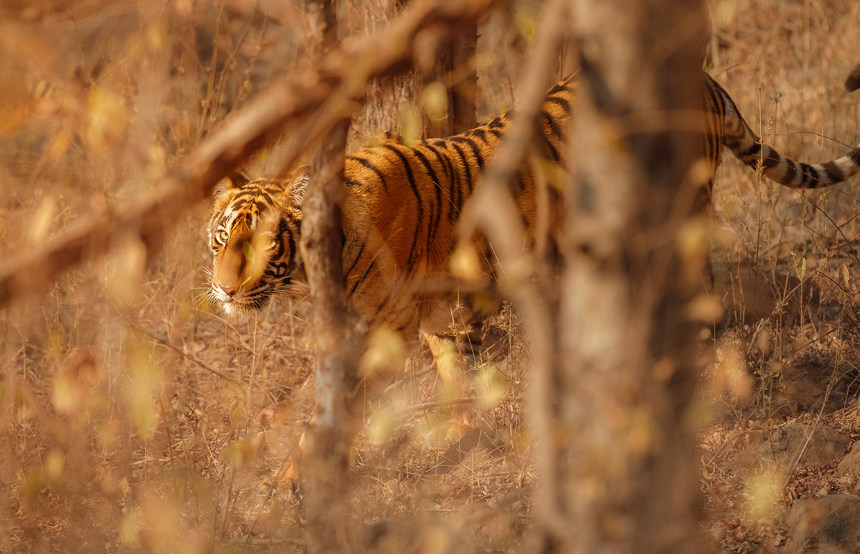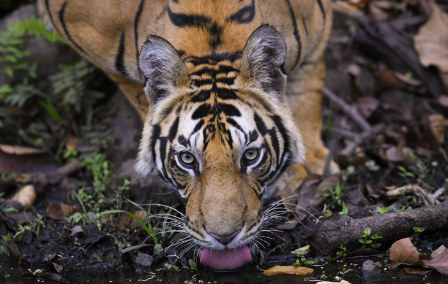Published 28th Jun. 2023
Reading time
With famous faces ranging from Paddington to Baloo, these solitary animals loom large across the globe both figuratively and literally. Bears are found mostly in the Northern Hemisphere, with the exception of Paddington's relatives, spectacled bears, which live in the cloud forests of South America (including, of course, deepest, darkest Peru). Grizzly and black bears are found extensively across Canada and parts of the US, while polar bears are restricted to the Arctic, and have slightly different characteristics and adaptations that help them survive here. So, if you’re a fan of these furry creatures, read on the find out about the best places to see bears in the wild, and how to encounter them in the safest and most natural way.
Grizzly bears can be spotted fishing for salmon in British Columbia between September and November, and throughout the wilds of Canada and Alaska year-round. Black bears can be found throughout the US and Canada, while their rare sub-species, Spirit or Kermode bears, live in the Great Bear Rainforest in British Columbia. Take a cruise around Vancouver Island for possible black bear sightings along the shoreline, or stay at a dedicated bear lodge tucked away in the Great Bear Rainforest, where guided bear-watching outings are bound to involve an encounter or two.
For the chance to see polar bears, head to the remote town of Churchill in the Canadian Province of Manitoba; head out on a walking safari with an expert and highly trained guide to try and get as close as possible to these majestic creatures. Unlike other bear species, polar bears don't need to hibernate, as they are better adapted to the bitter cold. Their thick coats of insulated fur and black skin under their fur make it easier for them to soak up the sun's rays, while their white coats give them camouflage in the snow and ice. They are also strong swimmers thanks to their large, slightly webbed, front paws, and can swim for hours at a time in search of food.

Alaska is one of the best places to see bears year-round, with grizzlies and black bears as the main species found here. Salmon runs are a key indicator for where bears will tend to congregate; between May and September, Chinitna Bay is a good bet for bear sightings, while Redoubt Bay is a hub of bear-related activity from June to August. Kuiu Island in Alaska is home to one of the densest populations of black bears in the world, and here you can kayak through the waters on the lookout for bears fishing for salmon. During the winter months, grizzly and black bears hibernate in warm dens to minimise their energy expenditure when there is less food readily available. However, if there is a mild winter with a consistent food supply, black bears may only hibernate for a short time, or not at all, so hibernation patterns can change.
Scope out Paddington's spectacled bear relatives in the cloud forests of South America. Named for their spectacle-like facial markings, these furry friends are found throughout the Andes, in Venezuela, Colombia, Ecuador, Peru and Bolivia (and therefore, are sometimes also referred to as ‘Andean bears’). Notoriously shy, the best way to catch a glimpse of them is by staying at a bear lodge within one of the region’s ecological reserves, such as Maquipucuna Cloud Forest Reserve. Alternatively, opt for a five-day guided tour of Cayambe Coca ecological reserve, with an experienced guide who will seek out these elusive animals. Interestingly, spectacled bears are primarily vegetarian, so sightings won’t be influenced by salmon runs, and they are known to sometimes spend days sitting in a tree waiting for fruit to ripen (paint drying springs to mind).

Norway is another of the best places to see bears. In fact, Svalbard is often cited as the best place to see them in Europe. Head to the east coast of Svalbard in Norway to try and spot polar bears on an expedition ship that leaves from Longyearbyen on Spitsbergen Island and sails through the surrounding archipelago. On-board guides will share information about the surrounding habitat, while pointing out the resident wildlife such as walruses, seabird colonies and of course, polar bears.

- Male brown bears can grow up to 10ft tall
- Polar bears can swim up to six miles per hour
- The average weight of a grizzly bear is a whopping 800 pounds
Written by Luisa Watts
Practical advice and inspiration for your next trip

Searching for the best safaris in India? We’ve got you covered. Whether you’re keen to track tigers in Madhya Pradesh, admire Asiatic lions in Gujarat or photograph forest eagle owls in Kerala, your India holiday awaits. While Bengal tigers steal the limelight in Bandhavgarh National Park, don’t forget about the shaggy sloth bears (though they’re not as cuddly as they look). Feeling up for the adventure?
15th September 2025 - India Safari & Wildlife

With their sleek, tangerine-tinged coats, piercing eyes and commanding presence, nothing beats the thrill of seeing a tiger in the wild. And where better than in India, home to the largest population on Earth? But when it comes to the best time to see tigers in India, it all depends on what you want from your trip. Whether you’d rather vivid green landscapes or crowd-free safaris, we’ve got the insider intel on when to see India’s famous big cats.
23rd June 2025 - India Safari & Wildlife

Channelling your inner cowboy and heading on a horse safari in Botswana is one of the ultimate safari experiences. With a variety of stunning landscapes available for exploration, it’s an incredible way of getting up close and personal with game in a way that just isn't possible in a traditional 4x4. You won't just be on a safari, you'll be in it. With the contrasting scenes of the Makgadikgadi Salt Pans, Thamalakane River and Okavango Delta in the nation’s arsenal, it's not hard to understand why Botswana horse safaris remain such a popular choice.
9th June 2025 - Botswana Safari & Wildlife

Our team of destination experts will get to know you and your unique requirements for your holiday

We work with you to build an ultra-personalised holiday itinerary with your choice of accommodation, experiences and activities

All of our holidays include little extras designed to make a big difference to your trip, from fast-tracking you through airport check-in and security to our network of local Concierges